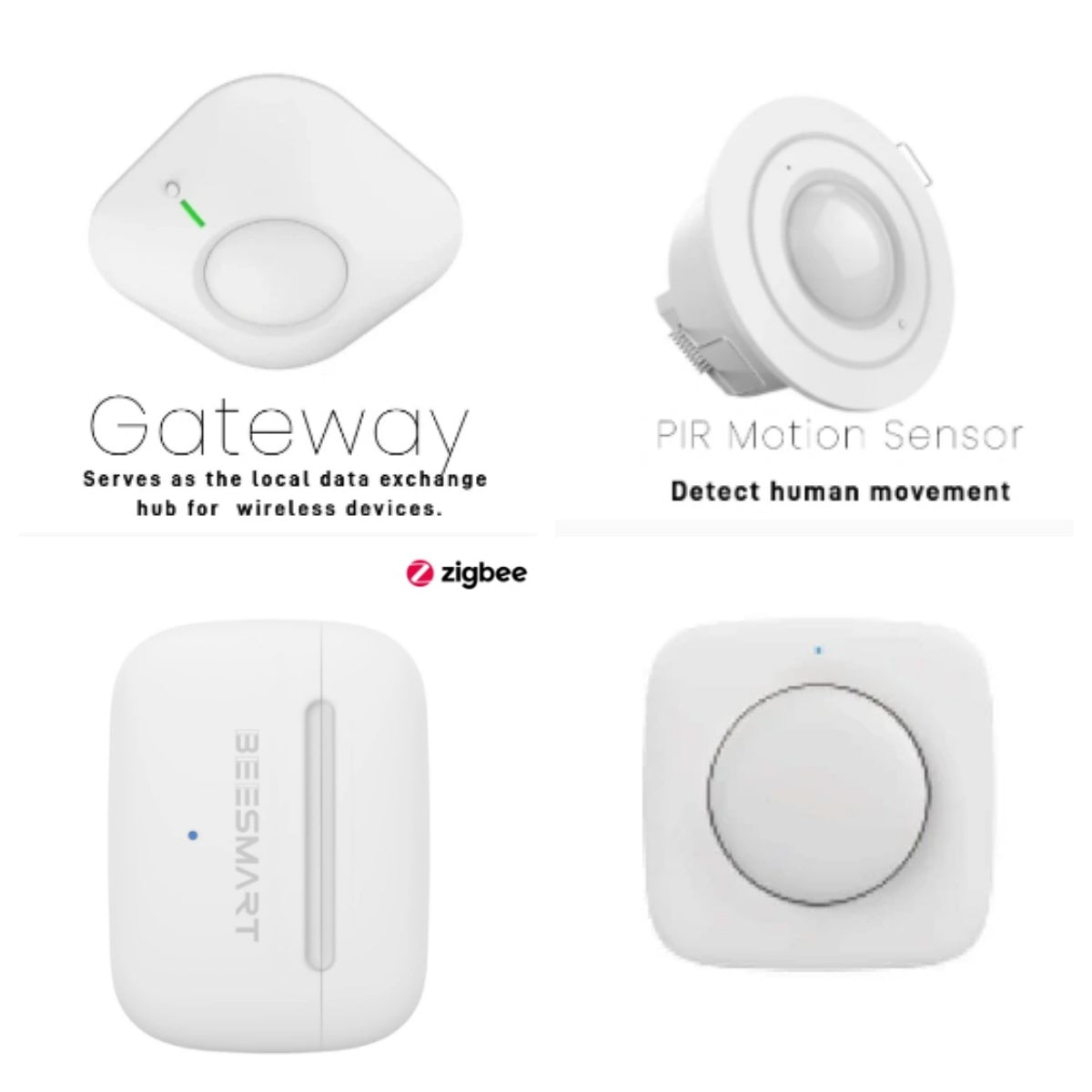With the development, the smart home is becoming popular gradually and it brings convenience and comfor to life. The realization of all this is inseparable from the support of the key technology of sensors. Sensors are like the "nerve endings" of smart homes, capable of perceiving changes in the external environment and transmitting this information to the control system, thereby enabling the intelligent operation of household devices.
Let’s to understand how sensor work first!
1. Signal perception
Sensors directly contact or sense the measured object through "sensitive components".
2. Signal conversion
The sensitive components convert the perceived non-electrical signals into electrical signals through physical or chemical effects.
3. Signal output and application
After being processed, the converted electrical signals (such as voltage and current) are transmitted to the control system,ultimately achieving monitoring, alarming, or linkage control.

What factors do we need to consider when installing sensors?
- The measured object and measurement requirements
- Environment factor
- Installation location and method
- The sensor's own characteristics
- Safety and compliance

Which scenarios are sensors usually applied?
1.Industrial Area
2.Environmental monitoring
3.Smart Home
Here, we will mainly focus on smart homes.
Let us show you some products!
1. Temperature and Humidity Sensor

Temperature and humidity sensors are widely used in smart homes. They can timely detect indoor temperature and air humidity conditions.
When the temperature or humidity is too high or low, it will automatically send a signal to the air conditioner or heating system to adjust the operation of the device, so that the temperature always remains within a range suitable for the human body or opened the dehumidifier to reduce humidity.
It prevents furniture from getting damp and clothes from going moldy,and avoids discomfort such as dry mouth and dry skin in the human body. Its role is particularly prominent during the plum rain season in some southern regions, as it can effectively keep the indoor environment dry.
2. Water Leak Sensor

Water leak sensors are devices designed to detect the presence of water leaks. They play an important role in homes, offices, and industrial settings. For example, when a water pipe bursts or a washing machine overflows, these sensors can quickly detect the water and send alerts to users through connected devices (such as smartphones) or trigger shut-off valves to prevent further water damage. This helps minimize losses caused by water leakage.
3. Human infrared sensors

Human infrared sensors can detect the presence of the human body. When someone enters a room, the sensor detects the human signal and automatically turns on devices such as the room's lights and air conditioner. After people leave the room, if no human presence is detected after a period of monitoring, the devices will automatically turn off to achieve energy-saving purposes. Such sensors are widely used in areas like corridors and bathrooms, greatly enhancing the convenience of life.
4.Door Magnetic Sensor

Door magnetic sensors feature easy installation, high sensitivity, low power consumption, etc., and are widely used in various fields.
Security Area
- Installed on the doors and windows , when the doors or windows are opened abnormally, the sensor will immediately trigger an alarm signal. The connected alarm will emit an alert, and at the same time, some intelligent systems will also push the alarm information to the user's mobile phone, allowing the user to promptly know the abnormalities at home.
- When the door is opened/closed, the system can automatically to turn on/off the air conditioner,lighting devices. This not only saves energy but also enhances the comfort of the environment.
- For families with elderly members and children, door magnetic sensors are even more considerate guardians. It allows you to keep track of the elderly's daily routines and pay attention to children in a timely manner, enabling you to provide more meticulous care.
5. Air Quality Detector
An air quality detector is a device used to monitor and analyze the quality of indoor or outdoor air. It can detect various pollutants such as PM2.5, PM10... as well as parameters like temperature and humidity.In daily life, it is widely used in homes, offices, and schools.
6. Infrared Transducer

It can be used to learn and transmit infrared remote control codes for controlling infrared devices such as air conditioners.It also comes with a built-in wireless ZIGBEE transceiver module,which can receive remote control commands,like turning the air conditioner on or off.This device is equippedwith an extensive library of 60,000 infrared codes.

The integration of smart homes and sensors not only improves people's quality of life but also achieves energy conservation and environmental protection.
For more information : https://beesmartiot.com/
Feel free to contact us following email: Marketing001@beesmart.hk
For more blog : https://beesmartiot.com/blogs/news
![]()






Leave a comment
This site is protected by hCaptcha and the hCaptcha Privacy Policy and Terms of Service apply.